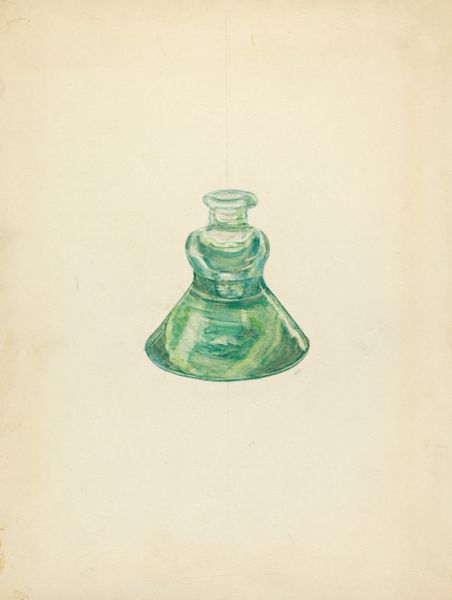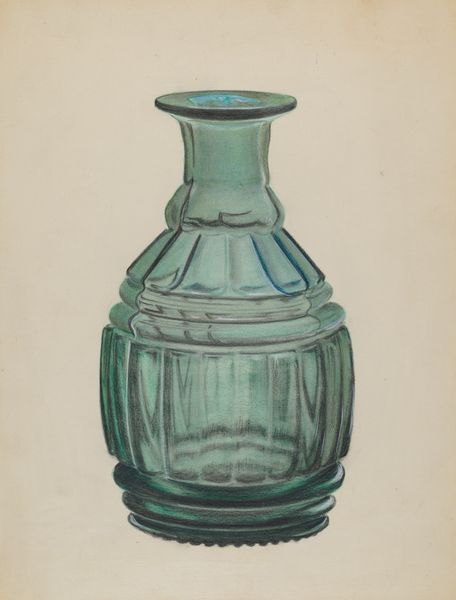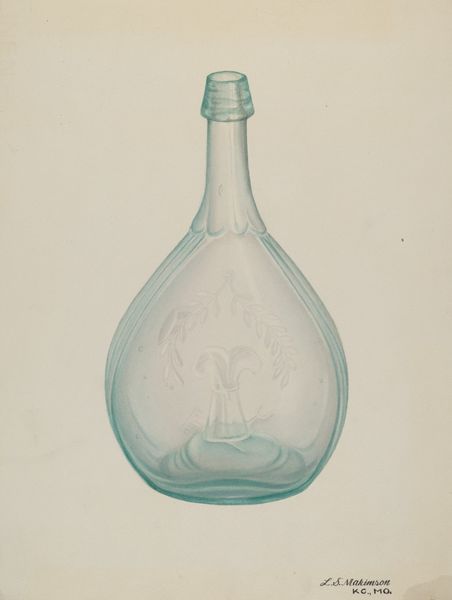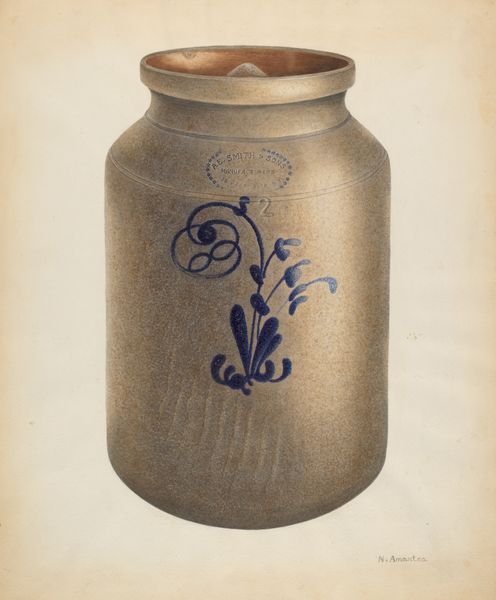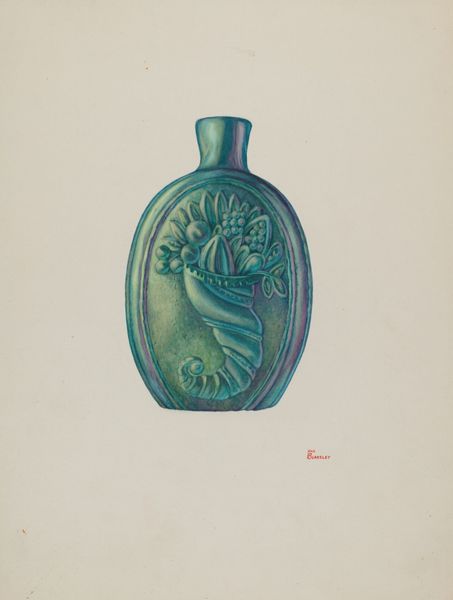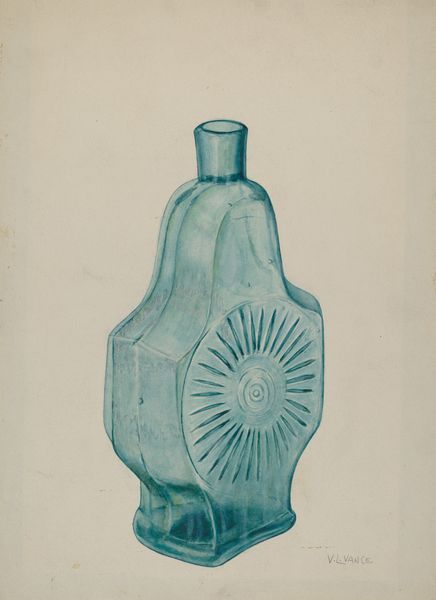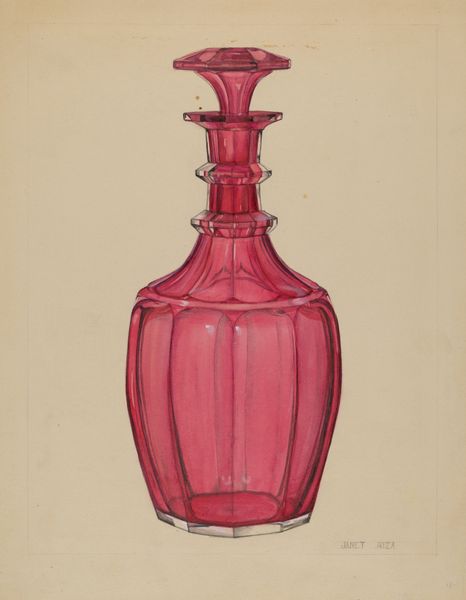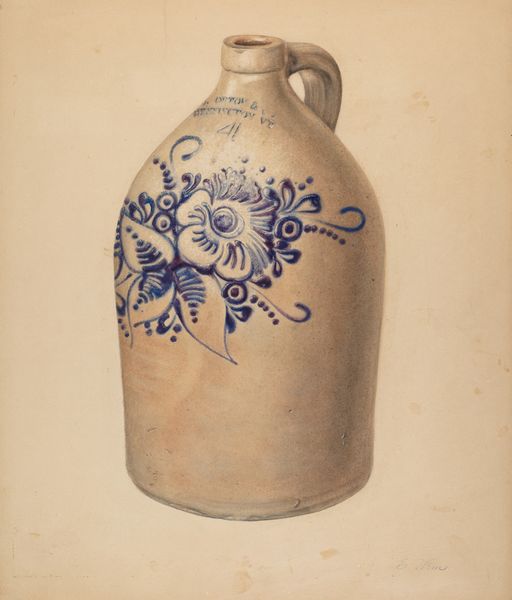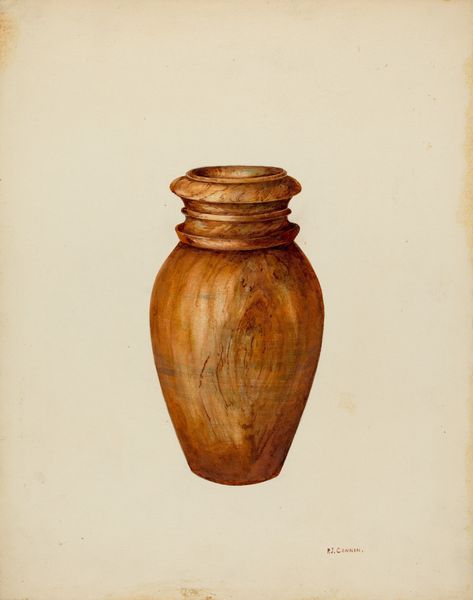
drawing, watercolor
#
art-deco
#
drawing
#
caricature
#
watercolor
#
watercolour illustration
#
decorative-art
Dimensions: overall: 28 x 22.9 cm (11 x 9 in.) Original IAD Object: Rendered exact size.
Copyright: National Gallery of Art: CC0 1.0
Curator: This delicate watercolour illustration by Erwin Schwabe, created around 1938, presents a study of a perfume bottle rendered in the Art Deco style. What’s your first take on this piece? Editor: I immediately notice how this artwork evokes a sense of luxurious simplicity. The palette is muted, yet the gold floral patterns suggest wealth, taste, and perhaps, a yearning for natural beauty within an artificial setting. Curator: Precisely! Observe the controlled lines, and geometric precision emblematic of Art Deco. Schwabe carefully structures the composition, balancing the bottle's angular form against the soft curves of the floral ornamentation. The materiality here – watercolor on paper – serves to enhance the refined elegance. Editor: The flowers strike me as quite potent symbols of ephemeral beauty, meticulously framed within a decidedly modern, angular construct. In terms of iconographic value, the perfume bottle could be understood as a symbol for the preservation, or perhaps even the manipulation, of scent and memory. A highly prized vanity object. Curator: I agree; there’s a fascinating tension between the industrial aesthetic and the natural world that’s mediated here through a crafted design. The floral elements introduce visual complexity, contrasting the minimalist design of the cap, directing the viewers gaze downward and allowing an appraisal of the objects individual aspects, thus enhancing an intellectual rather than a superficial experience. Editor: The recurring flower motif has an enchanting symbolic pull on us all the more in contrast with its crisp container. Perhaps evoking personal grooming and the almost ritualistic preparation of an ideal self that links it to much earlier symbolic forms of body modification and adornment, and thus deeper concepts around human relationships with image. Curator: A keen observation. The piece serves not just as a decorative object representation but invites scrutiny into the aesthetic ideals of a historical moment through composition, materiality and color usage, with the artist creating a moment for reflection within the functional item itself. Editor: This careful composition blends both surface decoration with a greater cultural narrative, offering us glimpses into the aspirations and symbolism embedded within the era.
Comments
No comments
Be the first to comment and join the conversation on the ultimate creative platform.
